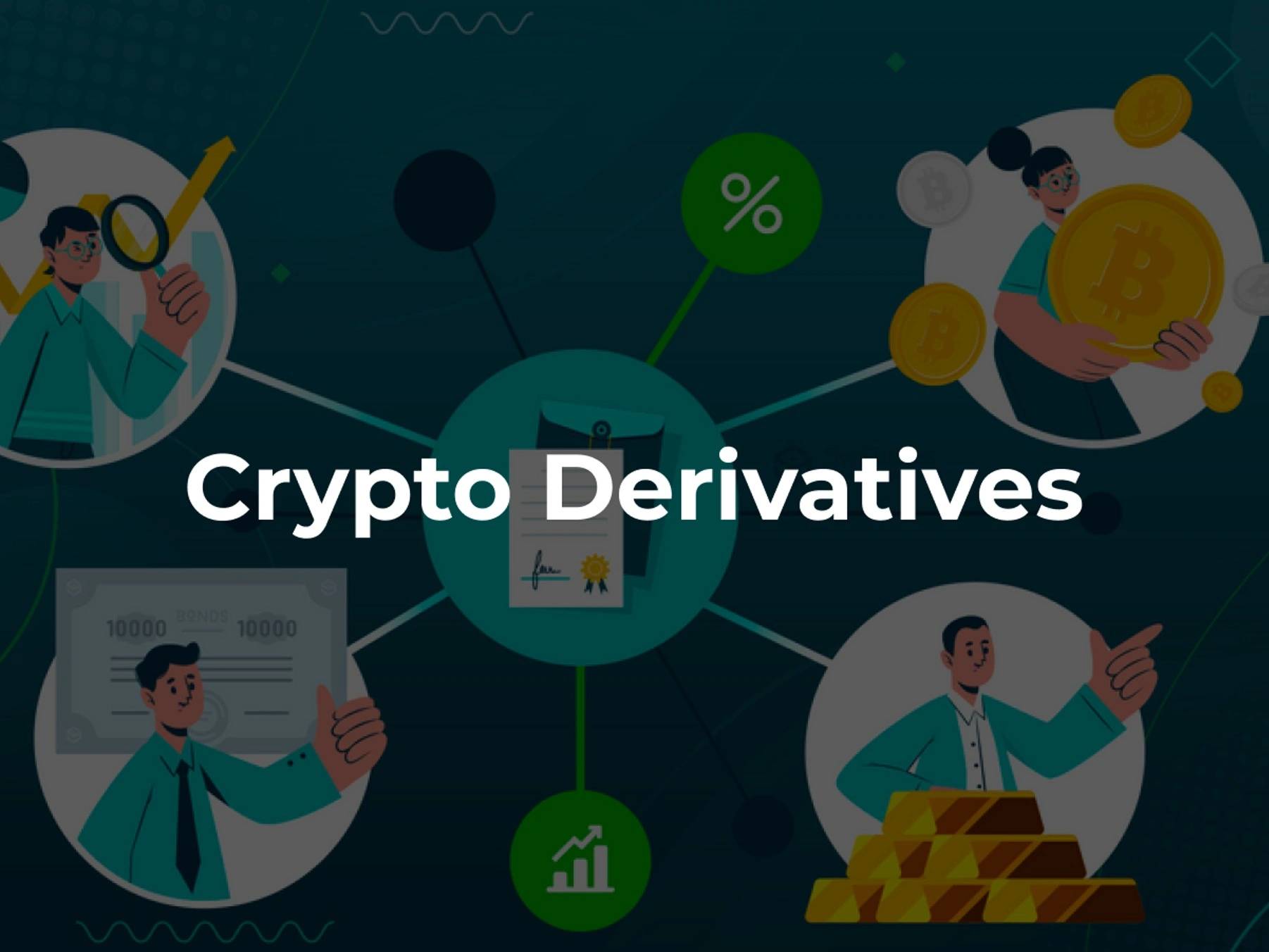订阅 wiki
Share wiki
Bookmark
Derivative
Derivative
衍生品是一种金融工具,它跟踪标的加密货币的价值。它允许交易者设计各种金融设置,并从各种市场事件中获益。 [1]
概述
加密货币衍生品代表涉及两个或多个参与方的金融协议,其价值源于标的资产。具体而言,它涉及以预定价格和未来特定时间购买或出售特定加密货币资产的安排。由于衍生品本身不具有内在或直接价值,因此衍生品合约的价值纯粹基于标的加密货币的预期未来价格变动。[7]
历史
加密货币衍生品的开端始于比特币期货的推出,尤其是在2011年初的ICBIT平台上,标志着2012年初比特币期货交易的开始。尽管ICBIT具有开创性作用,但由于当时比特币的普及率相对较低,这一概念未能立即获得认可。[8][9]
2012年后,对比特币的兴趣日益增长,这得益于包括1Broker(一个比特币外汇和差价合约交易平台,于2012年11月推出,后于2018年9月关闭)在内的各种平台促进了零售和机构的采用,从而弥合了比特币与传统市场之间的差距。Grayscale于2013年进入市场,促进了机构对比特币的投资,刺激了对与加密货币相关的更复杂金融产品的需求。这吸引了来自传统金融市场的专家,他们合作为新兴的加密货币市场设计衍生产品。[8][10]
比特币衍生品发展的一个重要里程碑发生在2014年,BitMEX的推出,这是一个点对点的加密货币衍生品交易平台。2016年BitMEX上推出的永续掉期被证明是一项具有影响力的创新,为加密货币衍生品市场树立了标准,并随后被主要交易所采用。[8]
2017年,加密货币衍生品开始受到关注,特别是芝加哥期权交易所(CBOE)和芝加哥商业交易所及芝加哥期货交易所(CME)在12月推出了与比特币相关的受监管期货合约。此举为市场参与者提供了一个受监管的衍生品交易平台。[8]
尽管2019年比特币价格面临挑战,但这仍然是比特币衍生品的重要时期。交易量激增,超过了现货市场,与传统金融市场观察到的趋势相似。Bybit(成立于2018年末)和Quedex(于2019年7月获得直布罗陀金融服务委员会的许可)等新平台涌现,提供多样化的衍生产品。由洲际交易所创立的Bakkt于2019年9月推出了实物结算的比特币期货合约,主要面向机构投资者。[8]
2020年,在疫情期间,MicroStrategy和Block Inc.等实体对比特币的机构兴趣加速,推动比特币价格在2021年1月突破4万美元。这种激增提高了对冲加密货币风险的需求,进一步普及了加密货币衍生品市场。[8][12]
衍生品如何运作
衍生品是两个实体(买方和卖方)之间达成的金融协议。这些协议(或合约)的性质因衍生品的类型而异。在某些情况下,它们会强制买方购买资产,卖方出售资产。或者,它们可能规定特定交易在预定日期以预定价格发生。虽然每种衍生品合约的具体细节各不相同,但它们中的大多数都包含以下要素:[1]
- 标的资产
- 数量
- 交割方式
- 结算日期
标的资产
标的资产构成了衍生品合约的基础。在加密货币衍生品中,这些标的资产可以包含各种加密货币,例如以太币 (ETH)、Solana (SOL)、莱特币 (LTC)等。衍生品合约的价格随着标的资产的市场价格波动。[1]
数量
数量代表根据衍生品协议条款交换的标的资产的体积。一份衍生品合约可能包含数百个特定加密货币单位,例如Avalanche (AVAX)、Tezos (XTZ)或Cardano (ADA)。 [1]
交割方式
实物交割衍生品是指合约履行时,交易双方直接交换标的资产。这意味着卖方在签订合约之前需要拥有或获得标的资产,以便在结算日将其出售给买方。结算时,买方收到加密货币,而不是等值的法定货币。 [1]
结算日
结算日是双方约定必须执行合同的日期。结算日过后,合同条款可以通过标的资产或其等值的法定货币进行结算。[1]
加密货币衍生品类型
衍生品包括以下类型:期货合约、期权、永续互换和远期合约。 [3][4]
期货
这是指买方和卖方之间预先达成的在以后交换资产的安排。它涉及双方押注特定资产在未来某个预定时间的价值。 [5]
期权
在加密货币期权交易中,个人可以根据未来的价格目标和预先确定的价格购买或出售特定的加密货币。与期货不同,这些期权为买方提供了在到期日之前避免在未来购买资产的灵活性。此外,买方同意向卖方支付溢价。加密货币期权根据其行权类型、涉及的货币和结算方式进行分类。期权合约分为两类:看涨期权和看跌期权。 [4][5]
- 看涨期权:这授予交易者和投资者在特定时期内以预定价格购买资产的权力。
- 看跌期权:这授予交易者和投资者在特定时期内以指定价格出售资产的权力。 [5]
永续合约
永续掉期是一种没有到期日的期货合约。它们紧密跟踪标的加密货币的现货价格。这些掉期使用资金机制来确保永续合约价格与现货市场保持一致。交易者可以无限期地持有头寸。 [5]
远期合约
远期合约和期货合约作为合约类型具有相似之处。然而,远期合约通过场外交易进行,而不是集中交易,从而将自己区分开来。这使得买方和卖方可以直接在双方之间个性化买卖协议。虽然存在这种灵活性,但缺乏集中化增加了与远期交易相关的风险。 [4]
互换
互换涉及两份合约:一份是立即买卖标的资产,另一份是未来交易同一资产。这代表了一种更复杂的期货交易形式。为了说明,这类似于购买特定型号的汽车,同时与朋友达成协议,在未来以更高的价格出售同一辆汽车。 [15]
益处
衍生品对于将加密货币领域塑造为公认的资产类别具有至关重要的影响。它们具有风险管理、增强流动性、完善价格发现和扩大投资组合等关键功能。 [6]
风险管理
衍生品在保护投资组合免受加密资产价格波动带来的不可预见风险方面发挥着至关重要的作用。一个强大的衍生品市场通过降低投资组合暴露于罕见、高影响力事件的风险,有助于吸引专业交易员和机构投资者进入加密货币领域。 [6]
增强流动性
流动性描述了在不影响资产价格的情况下,市场中交易发生的容易程度。它表示存在大量的买家和卖家,并决定了交易的顺利进行。加密货币衍生品增强了市场流动性,影响了交易者进入或退出头寸的容易程度。在流动性强的市场中,风险通常较低,因为总有人准备承担相反的头寸。[6]
完善价格发现
市场的主要作用是价格发现,这是一个确定特定资产当前价值的持续过程。价格受流动性、市场结构和信息流动等因素的影响。加密货币衍生品通过允许投资者做多或做空来增强价格发现,从而提高价格发现机制的效率。这可以平滑市场调整,并有助于防止不利的价格冲击。 [6]
拓展投资组合
衍生品为交易者提供了更广泛的投资组合机会,能够实现跨多种加密货币的多样化,并掌握高级交易方法。这些方法包括套利、配对交易和卖空等复杂策略。最终,采用这些高级交易技术可以提高基础加密货币资产的市场流动性。 [6]
用例
对冲
对冲是一种保护某人的加密货币投资组合免受不利市场条件影响的过程。这种做法需要建立抵消或反对现有头寸的头寸。对冲被旨在保护其投资组合并减少可能损失的个人所采用。它是有益的,尤其是在熊市期间,因为它提供了优于等待价格反弹或以不利价格出售资产的更佳选择。 [6]
投机
投机是指预测加密货币市场未来的价格变动以赚取利润。交易者利用市场的高波动性,当准确预测标的资产未来价格变动时,可能会获得可观的利润。 [3]
杠杆交易
杠杆交易允许以相对较小的资金控制大量的资产,例如只需要期货合约总价值的10%。在币安等平台上,交易者可以使用高达初始保证金125倍的杠杆。虽然杠杆可以放大潜在利润,但也会显著增加损失的风险。 [4]
加密货币衍生品平台
BitMEX
BitMEX 是一个 加密货币 交易所和专业的衍生品交易平台,以点对点 (P2P) 的方式运营。它由 Arthur Hayes、Ben Delo 和 Samuel Reed 于 2014 年创立,由 HDR Global Trading Limited 拥有和运营。 [13][14]
2016 年,该平台推出了永续期货,迅速成为其最受欢迎的衍生品。BitMEX 提供各种期货和其他衍生品;然而,对于新手来说,浏览交易所的功能可能很复杂。此外,BitMEX 仅促进加密货币之间的交易,不允许 法定货币 存款。 [13][14]
OKEx
OKEx 提供加密货币交易,包括加密货币期货、杠杆现货交易和永续掉期。[16]
2018年12月19日,OKEx 推出了永续掉期,这是一种与比特币挂钩的非到期、现金结算的衍生品合约。这些掉期合约的初始名义价值为价值 100 美元的比特币,允许交易者采取高达 1:100 的杠杆头寸。[16]
2019 年 11 月,OKEx 团队宣布推出以 Tether (USDT) 为保证金的期货交易。根据公告,期货的测试模拟于 2019 年 11 月 5 日开始。合约面值为 0.0001 BTC,提供 0.01 至 100 倍的杠杆选择,并以 USDT 结算。[16]
Crypto Facilities
Crypto Facilities是Kraken的子公司,是第一家获得英国金融行为监管局(FCA)颁发的多边交易设施(MTF)许可证的加密货币公司。该授权使Crypto Facilities能够促进加密货币交易对和杠杆合约的交易,该平台将其称为“期货”。此外,该平台还向芝商所集团(CME Group, Inc.)提供数据和指数服务,特别是与CME的比特币期货合约及其以太指数相关的数据。[17][18]
Kraken于2019年2月4日收购了Crypto Facilities,并将其更名为“Kraken Futures”。2019年3月25日发布的一份声明告知Kraken平台的用户,他们现在可以参与现货和期货交易。[18]
发现错误了吗?
